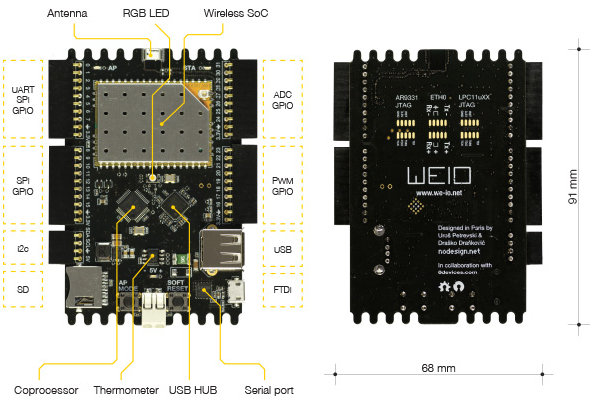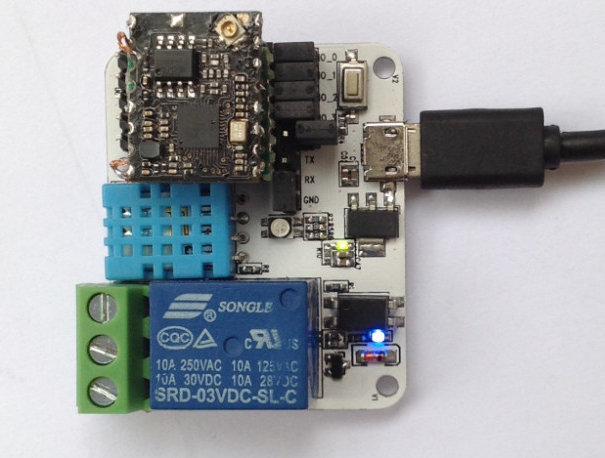ARM has just announced Cortex-M7 processor based on ARMv7-M architecture, with double the compute and digital signal processing (DSP) capability of ARM Cortex M4. The latest ARM MCU core targets IoT and wearables applications for the automotive, industrial, and consumer markets including motor control, industrial / home / factory automation, advanced audio, image processing, connected vehicle applications, and so on. Cortex-M7 comes with enhanced DSP instructions, a better FPU (FPv5 with single and double precision support), and tight coupled memory compared to Cortex-M4, according to an Anandtech article. ARM Cortex-M7 also achieves 5 CoreMark/MHz against 3.41 CoreMark/MHz for Cortex M4, and up to 3.23 DMIPS/MHz against up to 1.95 DMIPS/MHz. ARM Cortex-M7 features listed in the press release: Six stage, superscalar pipeline delivering 2000 Coremarks at 400MHz in a 40LP process. AXI interconnect (supports 64-bit transfer) and fully integrated optional caches for instruction and data allowing efficient access to large […]
Getting Started with LinkIt ONE Development Kit for Wearables & IoT
After going through WRTnode Quick Start Guide, it’s now time to play with LinkIt ONE, the IoT development board from Mediatek designed by Seeed Studio. LinkIt ONE is the first Hardware Development Kit (HDK) for Mediatek LinkIt, so there may be a LinkIt TWO, and/or other hardware platforms in the future. LinkIt ONE specifications Let’s quickly go through the specifications first: Processor – Mediatek MT2502A (Aster) ARM7 EJ-STM processor @ 260 MHz System Memory – 4 MB Storage – 16MB Flash for firmware + micro SD slot shared with SIM slot for up to 32GB additional storage Connectivity: Wi-Fi – 802.11 b/g/n (MT5931) with external antenna Bluetooth – BR/EDR/BLE(Dual Mode) GPS – Mediatek MT3332 with external antenna GSM/GPRS – 850/900/1800/1900 MHz band, Class 12 GPS with external antenna Audio – 3.5mm headphone jack (including mic support) – Support for MP3, AAC, and AMR codecs. Serial – Software Serial (Serial), and […]
WeIO is an Open Source Hardware IoT Board Programmable from a Web Browser (Crowdfunding)
WeIO is an open source hardware board for the Internet of things with Wi-Fi connectivity and lots of I/Os designed by nodesign, a French based startup, in collaboration of 8devices, the makers of the Carambola boards. WeIO is powered by an Atheros AR9331 SoC running OpenWRT as well as an NXP LPC MCU for faster handling of I/Os and support for analog I/Os. One interesting aspect of this board is that it can be programmed via a web browser using HTML5 or Python, and it does not rely on the Cloud to store data. WeIO hardware specifications: SoC – Atheros AR9331 MIPS 24K Wireless SoC @ 400 MHz MCU – NXP LPC11xx ARM Cortex M0 MCU for analog I/O and real-time H/W interfaces System Memory – 64 MB DDR2 Storage – 16 MB flash + micro SD slot Connectivity – 802.11 b/g/n Wi-Fi with on-board antenna (AP and STA modes), […]
W908I & W908II Wi-Fi Smart Sockets Support US, EU, UK, or AU Plug Types, Up to 4400W Power
I’ve had a look at several Wi-Fi smart sockets recently. Broadlink SP2 comes with a Chinese plug and supports power monitoring (About $40), Kankun KK-SP3 is more basic but sells only for $20, and runs OpenWRT, and Orvibo Wiwo S20 does not support power monitoring either, but is available with US, Europe, United Kingdom or Australia plug (About $40). If you want a Wi-Fi smart socket with a EU plug, there’s another option: W908I selling for $32 on Chinavasion. Based on the manufacturer website (HaiDian Technology) however, there are four W908I models with US, EU, UK, or AU plugs, as well as four W908II models with a higher power ratings (4400W). Instead of just one socket like socket models, it features a 3-pin socket, a 2-pin socket, and a USB port for charging devices. W908I / W908II specifications: Wi-Fi 802.11 b/g/n Sensitivity – 802.11b: < -84dBm; 802.11g: < -68dBm Output […]
xWifi Open Source Hardware Wi-Fi Module and Dock for the Internet of Things (Crowdfunding)
For some reasons, Wi-Fi modules are pretty popular this year. After modules such as VoCore, AsiaRF AWM002, and ESP8266, here’s come xWifi. This module is based on Mediatek MT7681 SoC which includes a TCP/IP stack like Espressif ESP8622 or TI CC3300, so it won’t run OpenWRT like VoCore or AsiaRF modules. The module only consumes about 350mW during transfer, it will be open source hardware, and the xWifi module plus a dock with a 10A relay, a humidity and temperature sensor, and a LED will go for as low as $17. xWifi module only specifications: SoC – Mediatek MT7681 802.11 b/g/n SoC with 32-bit RISC CPU. Support for Client/softAP mode. Package size 5×5 mm Storage – 512KB SPI Flash (for firmware) I/Os via headers: UART and SPI interfaces. 5x GPIOs PWM Power – 3.3V, GND Power Consumption – ~70mA @ 5V (during RX active) Dimensions – 14 x 17 mm The […]
ESP8266 WiFi Serial Module Costs Just $5
Wi-Fi is great because it’s ubiquitous, and rather fast for a wireless standard. However, it drains batteries fast, and Wi-Fi modules are usually much more expensive than Bluetooth modules for instance. There’s not much that can be done with regards to power consumption, but thanks to ESP8266 module, it’s now feasible to add Wi-Fi to your Arduino board, or others, for just $5 including shipping on Aliexpress, but SeeedStudio also have it for $6.95. If you buy 1,000 pieces, it goes down to about $3 per unit. As reported by Hackaday, this module embeds ESP8266 SoC which takes care off all IP stacks, a bit like Texas Instruments CC3000 SoC, but it’s just much cheaper. Here are some of the specifications of the module (and processor): SoC – Espressif Systems ESP8266 32-bit RISC processor with 802.11 b/g/n support(32-pin QFN package), Interfaces: SDIO 2.0, SPI, UART, I2S Wi-Fi – 802.112 b/g/n […]
$25 GL.iNet 6416A is an Hackable OpenWRT Router with Easy UART and GPIO Access
There are plenty of low cost routers supporting OpenWRT, but GL.iNet 6416A has several advantages compared to devices like TP-Link WR703N. Both are based on Atheros AR9931, but GL.iNet router has more memory and storage (64MB RAM + 16MB Flash vs 32MB RAM + 4MB Flash), two Ethernet ports instead of just one, and 6 GPIOs, the serial pins, and power signals (5V, 3.3V and GND) are all easily accessible via though holes or headers. Gl.iNet 6416A can be purchased for about $25 on DealExtreme or Amazon US, and it used to be listed on eBay, but is now out of stock. Gl/iNET 6416A specifications: Wi-Fi SoC – Atheros AR9331 MIPS processor @ 400 MHz System Memory – 64MB RAM Storage – 16MB Flash Connectivity – 2x 10/100 Mbit Ethernet ports, 802.11 b/g/n Wi-FI up to 150Mbps USB – 1x USB 2.0 port, 1x micro USB port for power Debugging […]
Embedded Linux Conference Europe 2014 Schedule – IoT, ARM vs x86, Optimization, Power Management, Debugging…
The Embedded Linux Conference Europe (ELC 2014), CloudOpen, and LinuxCon Europe will jointly take place at the Congress Centre Düsseldorf, in Germany on October 13 – 15, 2014. The 3-day events will consists of keynotes, presentations, and tutorials. Each day will open with two or three keynotes by speakers including Jim Zemlin (Executive Director, Linux Foundation), and Jono Bacon (XPRIZE), followed by presentation and tutorials. There will be 45 presentations for ELCE, 58 for LinuxCon, and 47 for CloudOpen, I’ll make a virtual schedule with a few sessions part of the Embedded Linux Conference Europe “track”. Monday, October 13 11:15 – 12:05 – Performance Analysis Using the Perf Suite by Mans Rullgar, Consultant When faced with a performance problem, the initial steps towards a solution include identifying the sections of code responsible and the precise reasons they are time-consuming. To this end, the ‘perf’ profiling tools provide valuable insight into the […]










